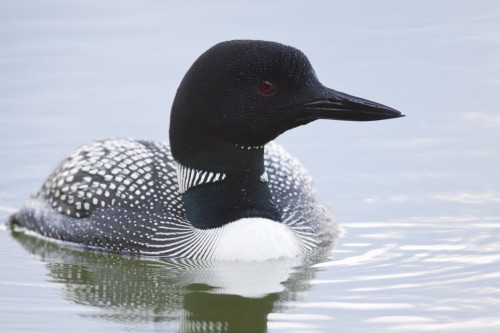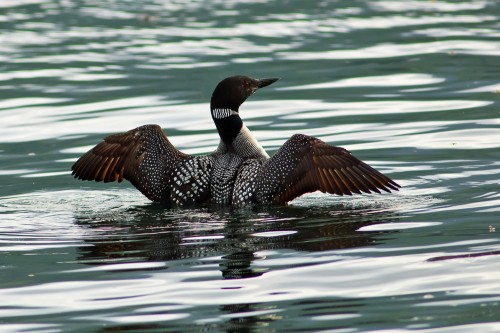 In the autumn of 1996, my daily walk to school took more than an hour, but I didn’t mind. It brought me from the shores of Ramsey Lake in Sudbury, Ontario, through a bright birch forest where everything was whishy and dappled and stripy-white. Blueberry bushes lined the path.
In the autumn of 1996, my daily walk to school took more than an hour, but I didn’t mind. It brought me from the shores of Ramsey Lake in Sudbury, Ontario, through a bright birch forest where everything was whishy and dappled and stripy-white. Blueberry bushes lined the path.
A birch tree alone is a beautiful thing, stark against the darker trees, but a whole forest of birch monoculture is matched in its strange artificiality only by the eerie verticality of a bamboo forest.
Artificial it was. Before they raised the smokestacks in 1972, the local nickel mine’s activities had rained sulphuric acid on the local lakes until all the native vegetation was gone. The place was like a moonscape.
After twenty years it had regenerated to the point where plants that loved acidic soil – birch and blueberries – had begun to thrive. But still the fish stocks were depleted and the Common loon, whose 30-year lifespan makes for slow reproduction, was still limping back into residence.
A little loon goes a long way, though, and I can still bring to mind the avian voice that projected across the lake most nights. I could write its call on sheet music if I knew the notation for quarter-tones.
Given that a breeding pair of loons produced only four or five surviving offspring during their lives, methyl mercury pollution and shoreline development weighed heavily on a population already weakened by the fish shortage. In 1998, another local threat would appear in the loon’s world: botulism.
The trouble began with the zebra mussel. Having hitched a ride in the ballast water of European cargo ships, the zebra mussel has spread all over the Great Lakes, supplanting native mussels. The voracious mollusk soon decimated zooplankton populations that form the basis of food chains. By filtering a litre per day of water, they also concentrate Type E Botulism spores.
 Lake bottom-dwelling gobies eat the zebra mussels, and once they become contaminated, their usual stealth behavior goes out the window. They swim erratically and draw attention to themselves. Deep-diving loons are attracted to the abnormal prey and end up poisoned, themselves. Humans aren’t usually affected by eating contaminated fish because the bacterium dies in the cooking process.
Lake bottom-dwelling gobies eat the zebra mussels, and once they become contaminated, their usual stealth behavior goes out the window. They swim erratically and draw attention to themselves. Deep-diving loons are attracted to the abnormal prey and end up poisoned, themselves. Humans aren’t usually affected by eating contaminated fish because the bacterium dies in the cooking process.
Thriving in oxygen-poor environments with an abundance of decomposing carcasses, botulism is a normal part of the putrifaction process, and it particularly enjoys warm water. The Great Lakes have warmed by 2.5 degrees since 1980, and botulism is kicking its feet up for six months of the year and making itself quite at home.
More than 100,000 water birds have been found dead of botulism on the shores of Lake Ontario, Lake Erie and Lake Huron in the last 15 years. That’s not counting most of the actual body count, which lies at the bottom of those lakes, having never washed ashore. You can tell the cause of death because they look so healthy and life-like – plump, well-muscled, in peak condition for migration season.
The common loon is far from endangered, and botulism is not by itself a scourge that will decimate populations. Maybe my gut reaction to the whole thing is overblown, but the death seems a melancholy one for such a musical creature. Their nervous systems compromised, they suffer paralysis and end up drowning or suffocating. I imagine a strangled loon cry echoing through the crisp night air.
I’m currently writing about bird extinctions. Which has made me so morose I really wasn’t sure I could take any more news. And it turns out–I can’t. Strangled loon cry here.
If more people went on regular walks they could see how the environment is changing. It is sad sometimes, but not always.
Thank you, Jessa for this timely piece. I work for a wildlife research group who study loons. In fact we have a Center for Loon Conservation. We are in the middle of a 5-year restoration project for these magnificent birds. I am just starting work on a scientific report about the many threats to loons, including botulism. If anyone wants to learn more, visit http://www.briloon.org.
Loons are such incredibly beautiful creatures. Crisp black and white with a touch of red in the eye. The few I have seen and heard have brought me such joy to sense a small part of their lives.